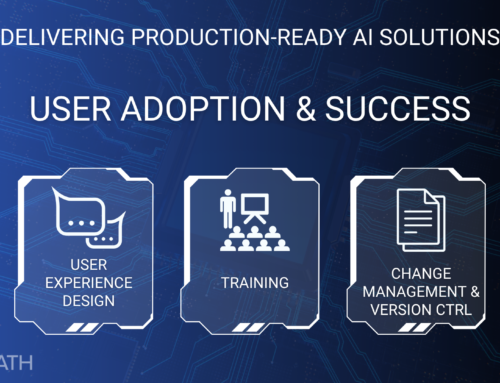Databricks, Snowflake, and Cloudera are leading platforms for enterprise data and machine learning solutions, each with unique capabilities across the MLOps (Machine Learning Operations) pipeline.
Introduction:
Databricks is a cloud-native platform built on Apache Spark, designed to handle large-scale data processing and machine learning pipelines. It provides seamless integration with popular machine learning frameworks like TensorFlow, PyTorch, and Scikit-learn, making it highly suitable for both traditional and deep learning workflows. With its Delta Lake storage layer and MLflow, Databricks offers robust tools for data versioning, model tracking, and experiment management, enabling smooth development, training, deployment, and monitoring of machine learning models at scale. It is best suited for enterprises looking for a unified platform to manage data engineering, analytics, and machine learning in a scalable and collaborative environment.
Snowflake is primarily a cloud-based data warehousing platform that has expanded its capabilities to support machine learning workloads through integrations with third-party services like AWS SageMaker and Python's Snowpark. While it excels in structured data storage, query performance, and SQL-based analytics, its machine learning capabilities are more limited compared to specialized platforms like Databricks. Snowflake is best suited for enterprises focused on SQL-driven data processing and analytics who can leverage external tools for developing, training, and deploying machine learning models on their data.
Cloudera is a hybrid cloud and on-premise platform built for complex data engineering, machine learning, and AI pipelines, leveraging open-source tools like Apache Spark, Flink, and Hadoop. With its Cloudera Machine Learning (CML) environment, Cloudera supports end-to-end machine learning workflows, including model development, training, deployment, and monitoring. It is highly flexible, supporting both traditional machine learning and deep learning in diverse environments. Cloudera is particularly advantageous for enterprises requiring strong data governance, hybrid cloud capabilities, and seamless integration across large, distributed data ecosystems.
ML LifeCycle Stage Comparison:
Below is a comparison and contrast of these platforms across the stages of the MLOps pipeline:
1. Data Ingestion & Preparation
- Databricks:
- Built on Apache Spark, Databricks excels at large-scale data processing with support for real-time data streaming, batch processing, and structured and unstructured data.
- It supports a variety of formats like Delta Lake, Parquet, JSON, and others. Its Delta Lake technology ensures efficient storage with features like versioning, schema enforcement, and transaction handling.
- Seamlessly integrates with cloud data lakes (AWS S3, Azure Blob) for large-scale data ingestion and transformation.
- Snowflake:
- Known for its data warehousing capabilities, Snowflake focuses on structured data storage and analytics.
- It has strong integration with external data sources (ETL tools, cloud data lakes), and is built for SQL-based transformations.
- While excellent for structured data, Snowflake is less suited for real-time or unstructured data pipelines compared to Databricks.
- Cloudera:
- As a hybrid and multi-cloud platform, Cloudera Data Platform (CDP) offers robust data ingestion options through technologies like Apache Nifi, Kafka, and Flink.
- Built on Hadoop and other open-source tools, Cloudera is versatile in handling structured, semi-structured, and unstructured data at scale.
- It offers better support for on-premise and edge computing than Databricks or Snowflake, which are more cloud-focused.
2. Data Processing & Feature Engineering
- Databricks:
- Feature engineering is highly efficient in Databricks, using distributed data processing via Spark, Delta Lake, and its optimized MLflow integration.
- It supports Python, Scala, R, and SQL for feature engineering, making it a flexible platform for data scientists.
- Built-in autoscaling helps optimize resource usage, ideal for large datasets and iterative transformations.
- Snowflake:
- Snowflake's SQL-centric architecture makes it excellent for structured feature engineering but not ideal for Python/Scala-based transformations.
- It does support Python with Snowpark, enabling some level of advanced data processing, but it's more limited in capabilities compared to Databricks' Spark environment.
- Performance scales well for SQL-based processing tasks, and automatic scaling ensures high availability and resource efficiency.
- Cloudera:
- Apache Spark and Flink are available in Cloudera for distributed data processing, similar to Databricks.
- Offers HBase, Hive, and other open-source tools for data transformation.
- Cloudera provides support for Python, Java, R, and Scala for custom feature engineering, with better on-premise optimization than Databricks or Snowflake.
3. Model Development & Training
- Databricks:
- MLflow, which is tightly integrated into Databricks, supports model tracking, versioning, and experiment management. This makes Databricks strong in handling the model lifecycle from development to deployment.
- It supports a variety of machine learning libraries such as TensorFlow, PyTorch, Scikit-learn, and more, allowing both traditional ML and deep learning models.
- AutoML features help in the initial stages of model building for data scientists with limited expertise.
- Snowflake:
- Snowflake is not traditionally known for machine learning, but with Snowpark and integration with external machine learning platforms (like AWS SageMaker), it can handle model development, though it's not as optimized for in-house training.
- Models often need to be developed outside Snowflake and then applied to the data within Snowflake, which creates additional complexity.
- It has some integration with Python libraries and can use UDFs (User Defined Functions) for lightweight model scoring, but it's less robust for large-scale training.
- Cloudera:
- Cloudera's ML tooling includes Cloudera Machine Learning (CML), which is built for model development, experiment tracking, and collaboration.
- Supports TensorFlow, Scikit-learn, and SparkML, offering a distributed environment for large-scale model training.
- With access to Hadoop ecosystems like YARN and GPU support, Cloudera is powerful for both traditional ML and deep learning workloads, especially in hybrid environments.
4. Model Deployment
- Databricks:
- Databricks allows easy model deployment using MLflow's built-in serving features. Models can be deployed as REST APIs or in batch/real-time pipelines.
- Integrates with Kubernetes and other orchestration tools for scaling.
- Supports both real-time and batch model deployment, making it a versatile platform for deployment across various use cases.
- Snowflake:
- Snowflake has limited native support for model deployment but can integrate with external tools like AWS Lambda or SageMaker for deployment.
- Models can be deployed as SQL UDFs but lack real-time serving capabilities compared to Databricks.
- Generally requires an external tool for production-grade model deployment.
- Cloudera:
- With CML, Cloudera supports full model deployment pipelines. Models can be deployed as REST APIs or used in streaming applications through Apache Kafka.
- Cloudera offers hybrid cloud and on-premise deployment options, which is beneficial for enterprises with regulatory or data sovereignty concerns.
- Kubernetes-based infrastructure for containerized deployment is also supported, offering scalability and flexibility.
5. Monitoring & Governance
- Databricks:
- With MLflow and Delta Lake, Databricks excels at model tracking, versioning, and lineage. It allows easy tracking of experiment performance and model drift.
- Delta Lake provides audit trails, schema enforcement, and data governance.
- It integrates well with Databricks Jobs for automating workflows and orchestrating model retraining.
- Snowflake:
- Snowflake's governance and compliance features are strong due to its built-in security, data masking, and audit capabilities.
- However, model monitoring and retraining are not built-in features and would typically require external integration (e.g., with AWS for model monitoring).
- Data governance is robust, with support for role-based access control (RBAC) and compliance features for industries with stringent regulations.
- Cloudera:
- Cloudera has a strong focus on governance through its SDX (Shared Data Experience), which provides centralized security, governance, and lineage across hybrid environments.
- Offers full monitoring of models and data pipelines with tools like Apache Atlas and Ranger.
- Model drift detection and retraining are possible through CML's built-in monitoring tools.
Summary:
- Databricks: Best for large-scale, cloud-native, end-to-end machine learning pipelines. It excels at data processing, model development, and deployment, with robust MLOps tools like MLflow.
- Snowflake: Ideal for SQL-based data processing and analytics. While its ML capabilities are growing, it relies on integration with external tools for advanced machine learning tasks.
- Cloudera: Strong in hybrid and on-premise environments with comprehensive support for the entire data and ML lifecycle, particularly for organizations with complex infrastructure requirements.
Conclusion:
For enterprises needing a highly scalable, cloud-native, and collaborative platform, Databricks is usually the go-to, while Snowflake is more data warehouse-focused, and Cloudera excels in hybrid cloud and on-premise deployments.






